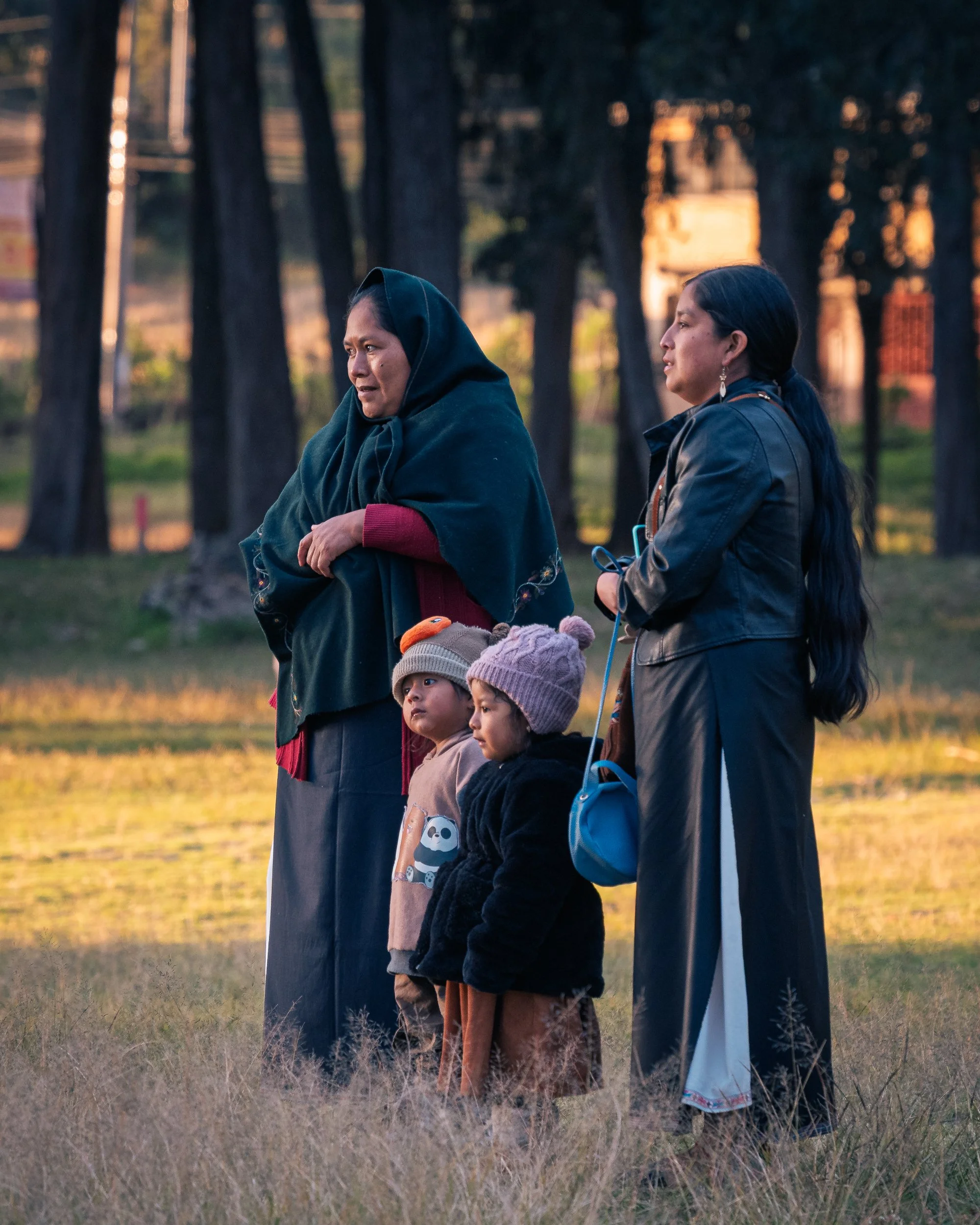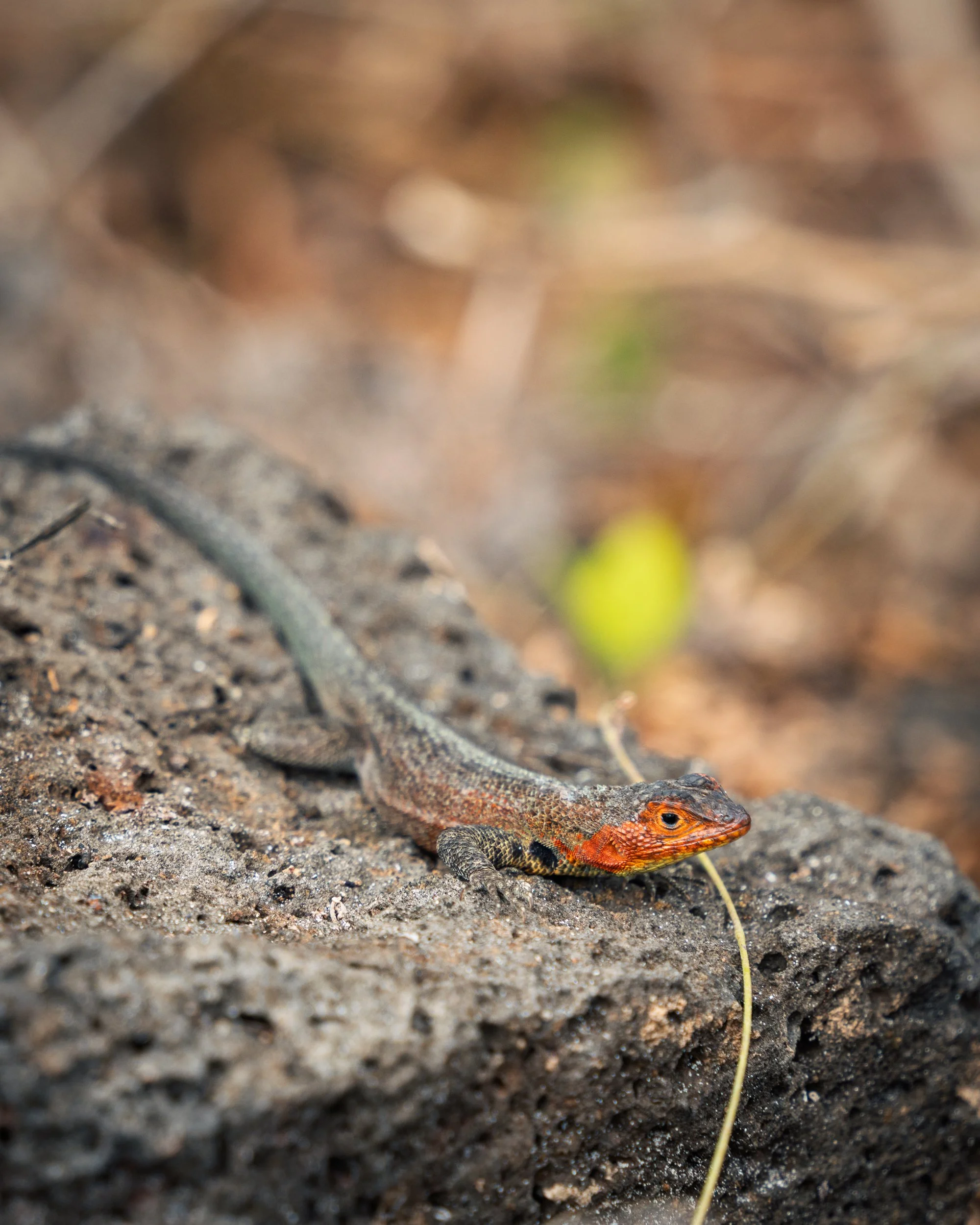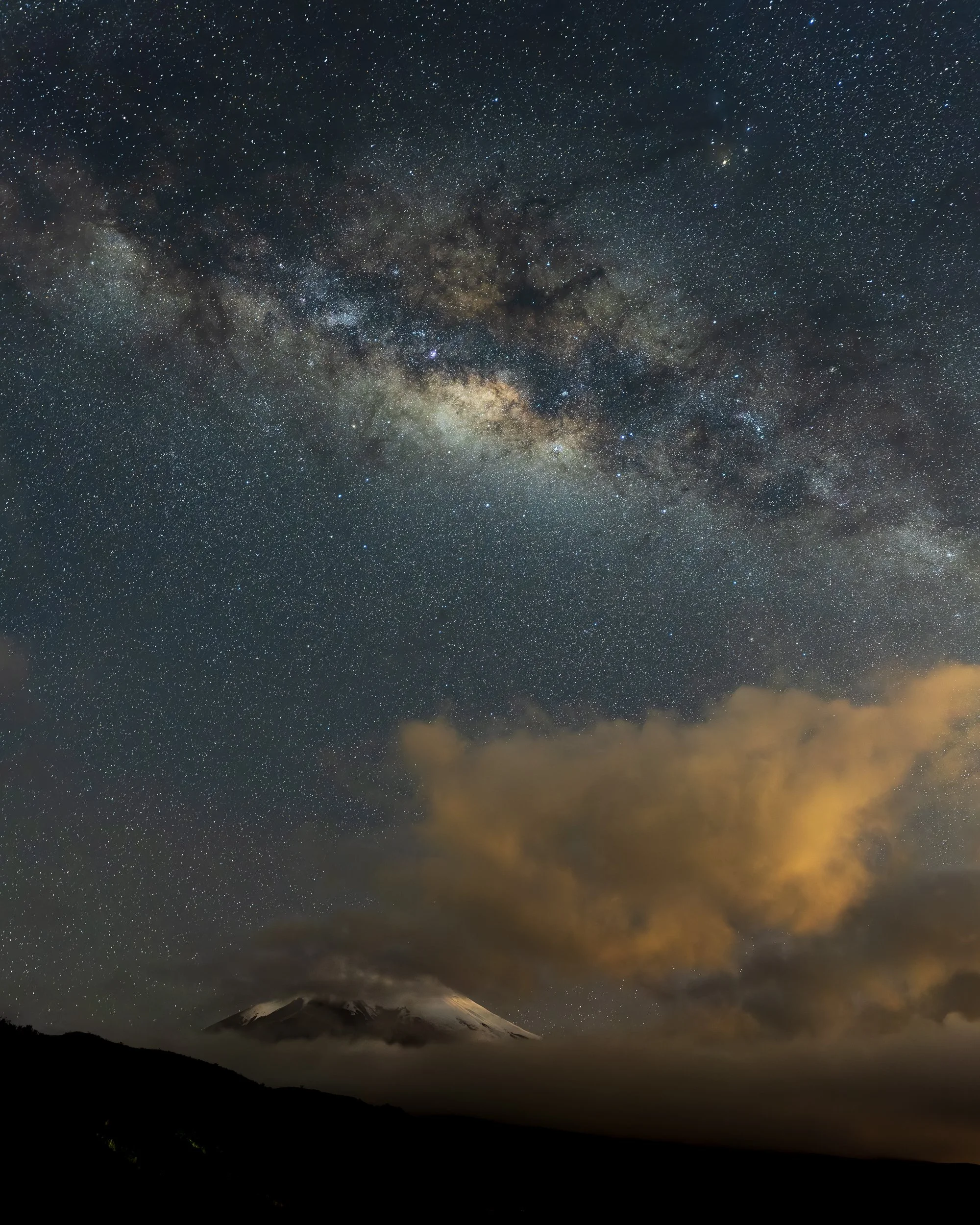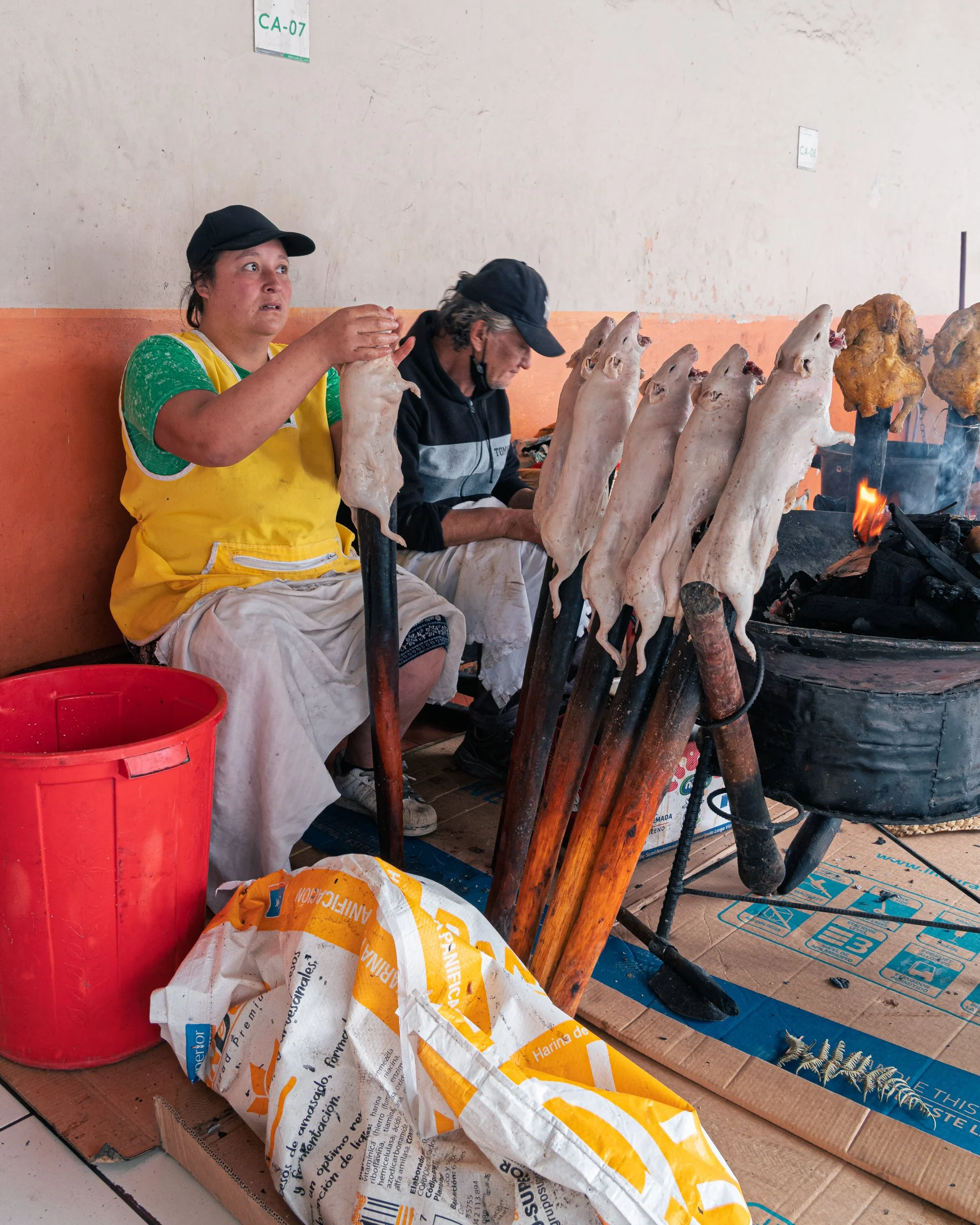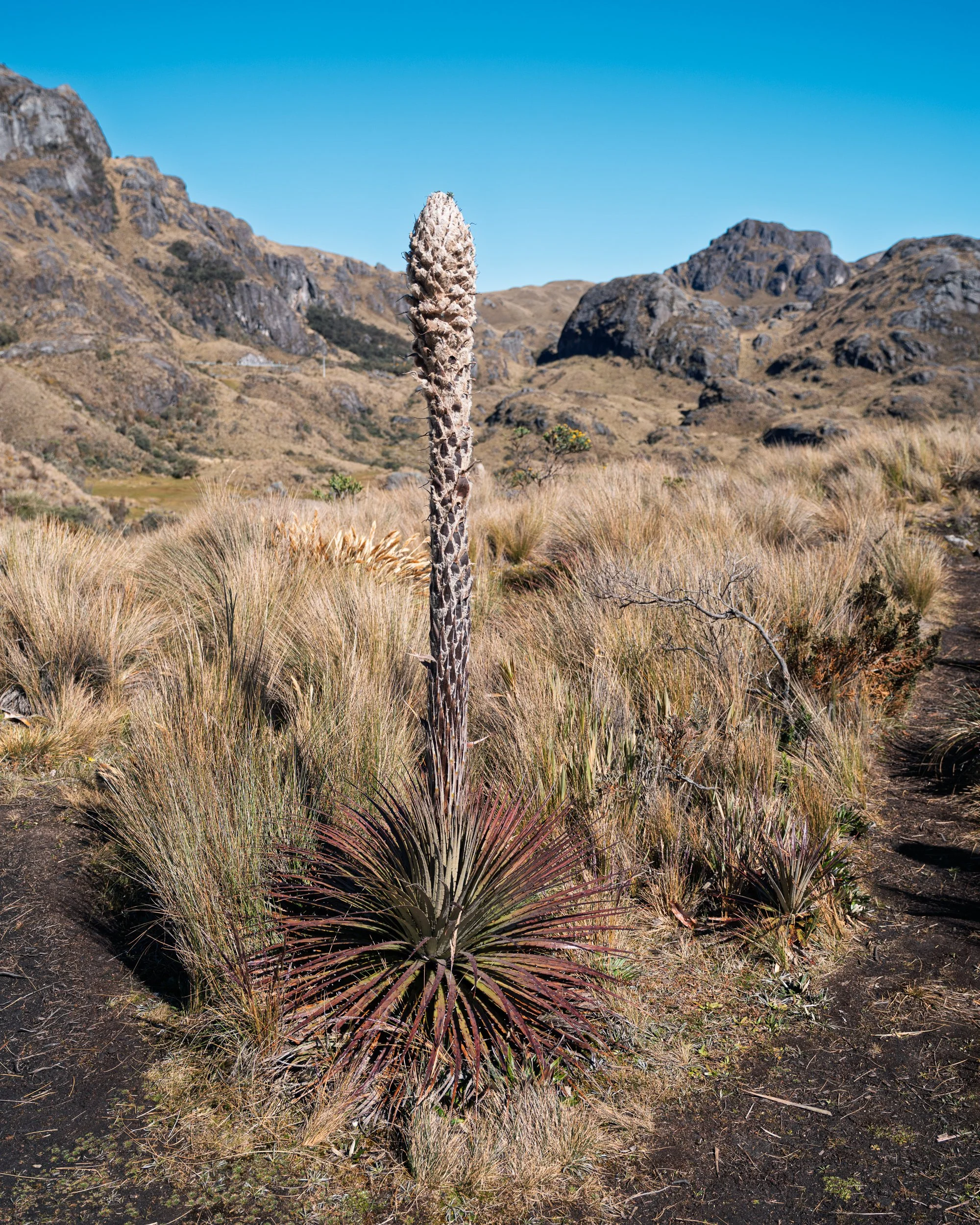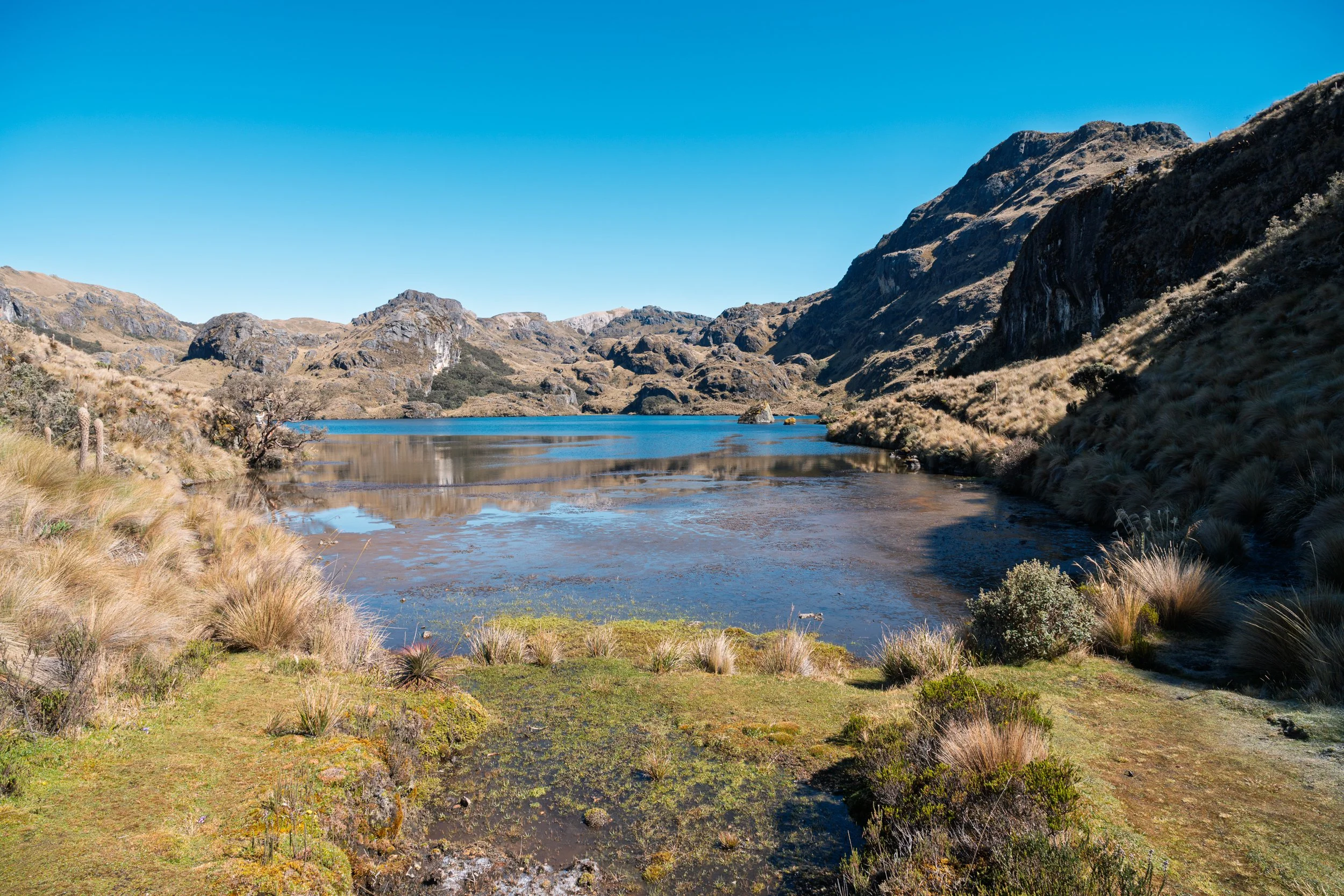Ecuador
Middle of the World
On June 30th, we crossed the border into Ecuador at the bustling frontier town of Tulcán, marking the start of our new chapter in South America. Our first stop was one of the town’s most famous and unexpected landmarks—the Cementerio Municipal of Tulcán, known for its remarkable topiary gardens. Strolling through the manicured greenery, we admired the intricate shapes and patterns carved from cypress trees, each a living work of art and a tribute to Ecuadorian creativity.
From there, our journey took us south to Finca Sommerwind near Ibarra, a welcoming campsite run by fellow travelers. We settled in for four peaceful nights, using the finca as a base to explore the region. In Ibarra, we wandered through its colonial streets and enjoyed the relaxed atmosphere of the “White City.” One day, we ventured to the Complejo Cultural Fábrica Imbabura, a beautifully restored former textile factory turned cultural center, where history and art merged in a unique setting.
Next, we set our sights on the stunning Laguna de Cuicocha, nestled in the crater of a dormant volcano. Blessed with clear skies and bright sunshine, we embarked on the hike around the lake’s edge. The trail offered panoramic views of the deep blue water and the twin islands in its center, making the effort well worth it.
We then moved to Lago San Pablo, where we spent two nights enjoying the tranquil lakeside setting. From there, we visited the famous market of Otavalo, one of the largest indigenous markets in South America. The vibrant stalls overflowed with colorful textiles, handmade jewelry, and traditional crafts—an absolute feast for the senses.
Continuing our route south, we paused at Quitsato, a giant sundial located exactly on the Equator line, before making a brief stop in the small city of Mitad del Mundo, another iconic spot marking latitude 0°0’0”. These visits were fun reminders of the unique geography of Ecuador.
Our next major destination was Quito, where we camped at Andy’s campground, perched on the heights above the capital and offering sweeping views over the city. Over several days, we explored Quito’s lively streets, historic plazas, and ornate churches. One highlight was taking the Teleférico cable cars up the slopes of the Pichincha Volcano, where crisp mountain air and spectacular vistas awaited.
From Quito, we embarked on an unforgettable adventure—a trip to the Galápagos Islands. We joined a 4-day cruise, sailing between islands and witnessing the raw natural beauty that makes the archipelago so legendary. From playful sea lions to giant tortoises and surreal volcanic landscapes, it was a dreamlike experience.
Upon returning to the mainland, we continued our journey to Cotopaxi National Park. There, we hiked up to the Refugio José Rivas, located at an impressive 4,865 meters of elevation, with the snow-capped peak of Cotopaxi towering above us. Still drawn to high-altitude challenges, our next stop was the mighty Chimborazo. Driving our motorhome up to 4,800 meters, we then hiked to the 5,000-meter mark—the closest point on Earth to the sun, thanks to the planet’s equatorial bulge. The thin air, vast silence, and endless sky made it an unforgettable moment.
After a short but pleasant visit to Alausí, we headed to Cuenca, a charming colonial city where we spent five nights. We explored its cobblestone streets, riverside walks, and historic buildings, as well as making small excursions to the surrounding countryside.
Finally, our route took us south through the picturesque valley of Santa Isabel, with its patchwork of farmland and mountain vistas, guiding us toward the border. After 40 memorable days in Ecuador—filled with breathtaking landscapes, cultural encounters, and once-in-a-lifetime adventures—we crossed into Peru on August 9th, ready for the next chapter of our South American journey.










